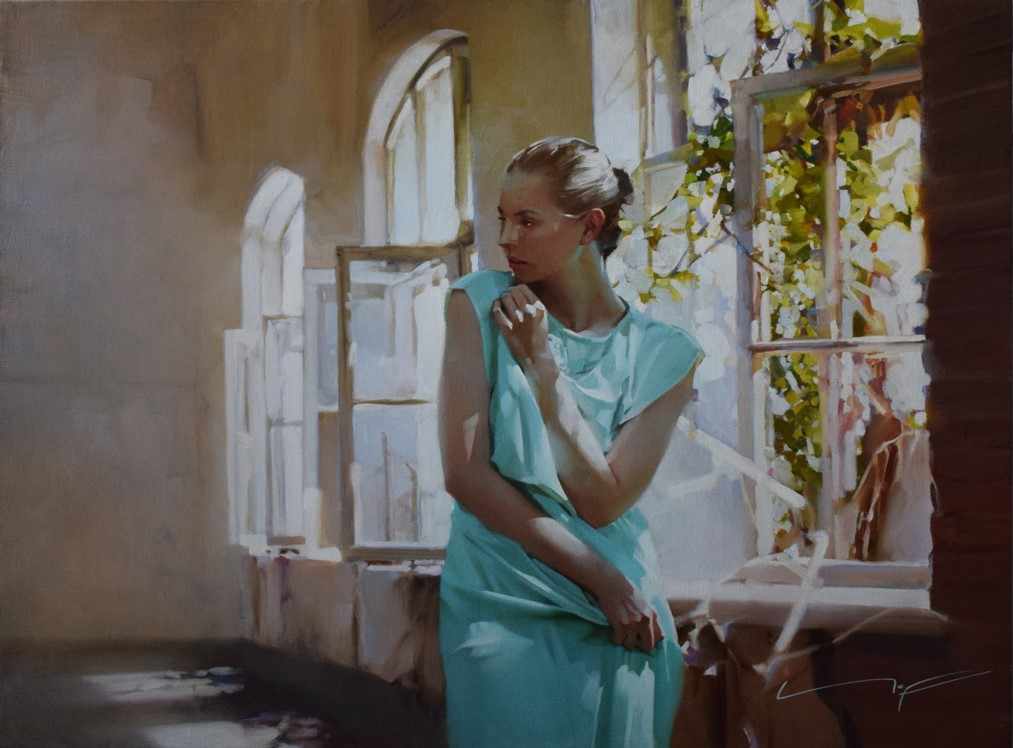
Alexey Chernigin. Twenty Years Later. 60х80 cm, oil on canvas
The idea of an interview the artist Alexey Chernigin was generated during the preparations for his exhibition 'The Signs of the Time.' The small art-project includes a number of diverse pieces and presents Alexey Chernigin as a versatile painter, who is capable of reflecting on the eternal values of humanity, and, at the same time, still has the ability to be a romantic and a dreamer. It is the live conversation with the author of the artworks that ensures accurate understanding of his paintings, feel the artist’s ideas and learn to understand his artistic language. In this interview, Alexey Chernigin unveils stories about the most striking sources of inspiration, the personalities who influenced his professional development and about the subjects of his paintings.
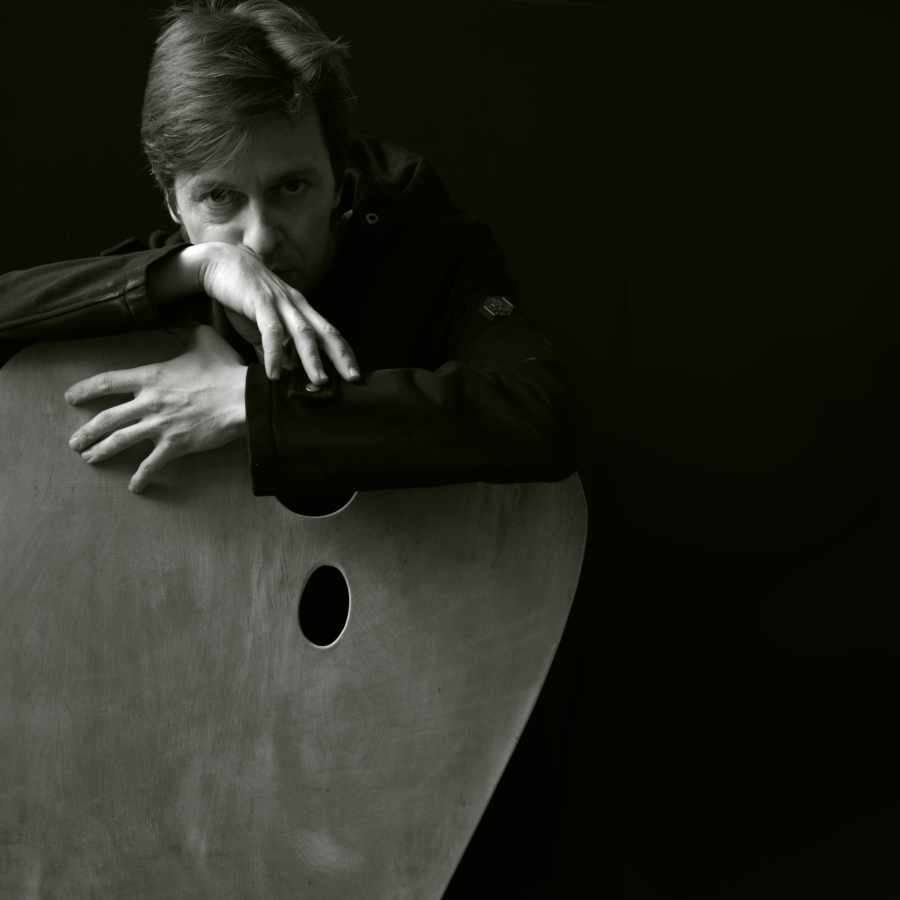
Tell us about the beginning of your creative journey. Why have you chosen to become an artist?
I was born into a family of artists and grew up surrounded by my father’s paintings. I really enjoyed watching him at work. At the age of six, my father took me to an art studio at the Palace of Pioneers, it was the same old studio, which he himself attended as a child. There was a very free, creative atmosphere and wonderful teachers. In 1990, I entered the Nizhny Novgorod Art School to study graphic design, where I have discovered much about graphic arts.
After graduating from the Art School, I entered the Design Department of the University of Architecture and Civil Engineering. It was a completely new environment, where graphic art and plastic art were elevated to a cult, and most importantly, where students are taught to think spatially and conceptually. We had an excellent teacher of painting, drawing and associative composition, Alexander Korneev. In many ways, it was he who had helped me to build the foundations of my current method of developing an artistic conception, he also had introduced me to the understanding of space and composition. After the University, I tried myself in both industrial and interior design, but all these directions of work still could not take me away from Painting, which is the main thing in my life.

Alexey Chernigin. Twenty Years Later. 60х80 cm, oil on canvas
How has your art changed compared to the early period and why?
I started with graphic arts, experimented with gouache, acrylic, and mixed media. I love watercolor with its crazy freedom, unpredictability and, at the same time, enormous responsibility for every brush stroke. In oil painting, I try to maintain the air of lightness and transparency, which has always impressed me so much in watercolour. But my incentives have become more ambitious, and as a result I have started working mostly in oil. My education in the fields of Architecture and Design provides an ability to understand the world around us not just in terms of volume and shape, but also in its complexity. Design forms a sense of style in a person up to the point that even the slightest discrepancy may be perceived as an offence, like a false note in music.
What is the difference between the worldview of an artist and an ordinary person who has nothing to do with creativity?
In my opinion, the most interesting and, at the same time, the most difficult thing in my profession is to learn seeing and interpreting the world in my own way. After all, people often simply do not 'see' anything around them. No, I mean they do see the things and objects, of course, but they do not 'feel' those with their eyes. Yes, indeed, they do not bump into pillars when walking down the street and they are able to walk through the doorways, but the things in this world are often perceived by people as 'symbols' in a computer game. People generally do not have any interest in the things as they are. It takes time to develop the interest in the world, which surrounds us; and we are always in a hurry living our 'accelerating' lives, to the point that we start perceiving the world as a collection of bright pictures. People chase new impressions, take countless photographs, which they upload on the Internet every second. The chance to begin seeing things differently can only be achieved by slowing down this crazy rhythm of life, staying in the moment and experiencing it. This, in turn, would help feeling resonance with the surroundings, feeling the puls of the world.
A painting is never born suddenly, it always comes from the layers of life, an idea of a painting appears like a light breeze, like the twenty-fifth frame which gets stuck in the subconscious mind. For some time, it may stay there, until a random association is superimposed on it, causing a completely new development of thoughts and images. Then the idea begins to unwind, acquiring more and more details, and gradually receiving its unstoppable visualisation on a canvas.
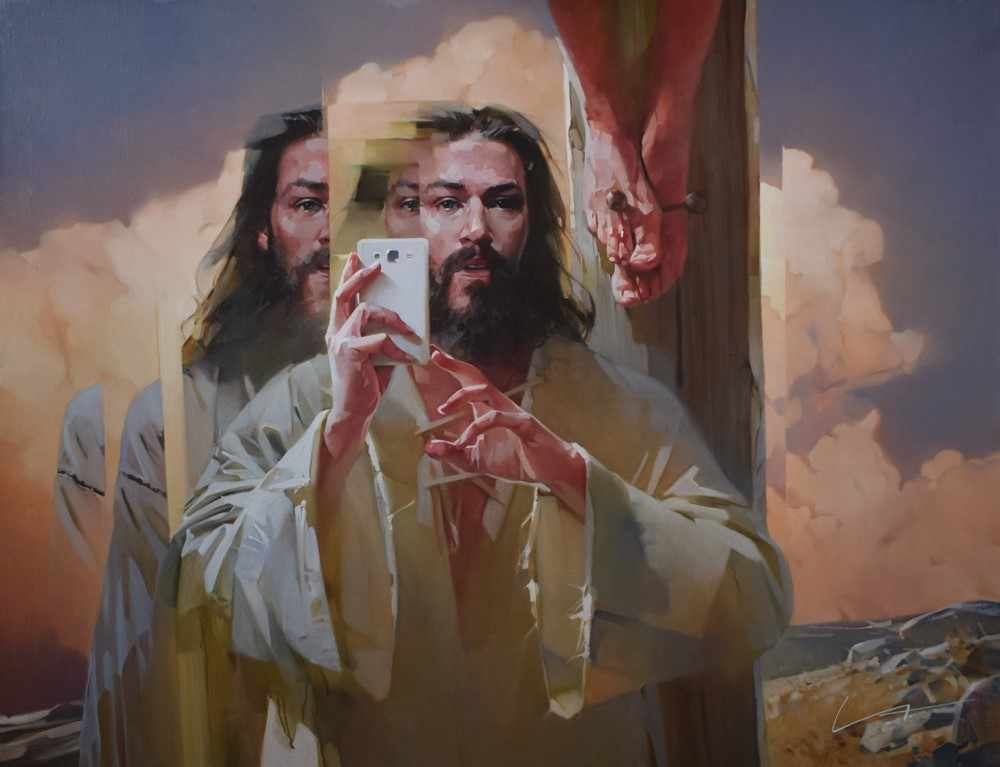
Alexey Chernigin. Selfie. 100x130 cm, oil on canvas
Why do you often depict female images, are they allegorical to you? What other themes are interesting in developing in your work besides this?
As for me, a woman is Space, an endless variety of nuances in plasticity, movements and proportions, and I always search for new in the same model. A woman is not just a beautiful being, it is a human being full of energy, emotions, and feelings. Life pulsates in a woman, she moves and breathes. The structure of a woman's skin interacts with light in an amazing way, giving the body a special colour depth. My paintings are often classified as 'nudes,' and the erotic context is, of course, of interest to me, but not primary.
In addition, in many paintings I explore the theme of speed, movement, and the relationship between man and the city. We live in the rhythm of the city, and submit to its chaotic movement. Sometimes it is important to stop, get out of the flow, and have a look at this multidirectional movement from the side. I consider that the speed is the central concept in painting. Without it, a painting would be dead. Moreover, each painting has its own internal speed.
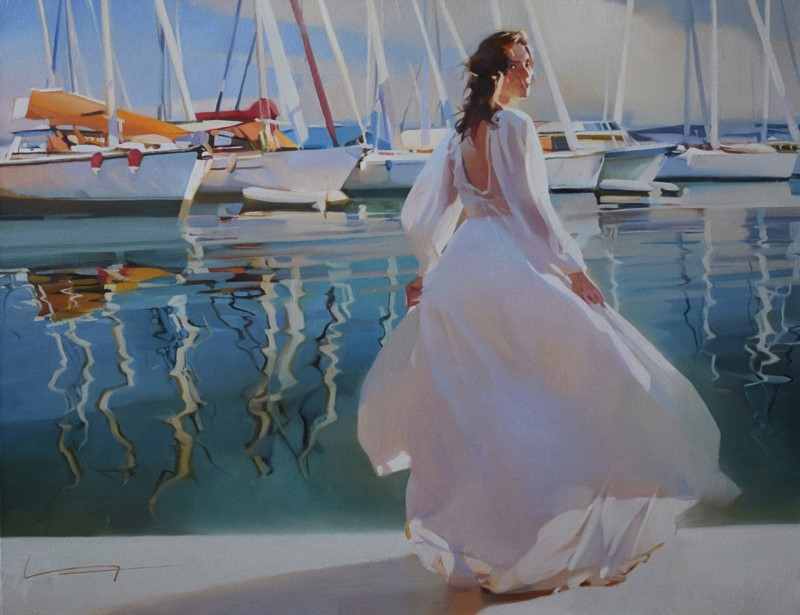
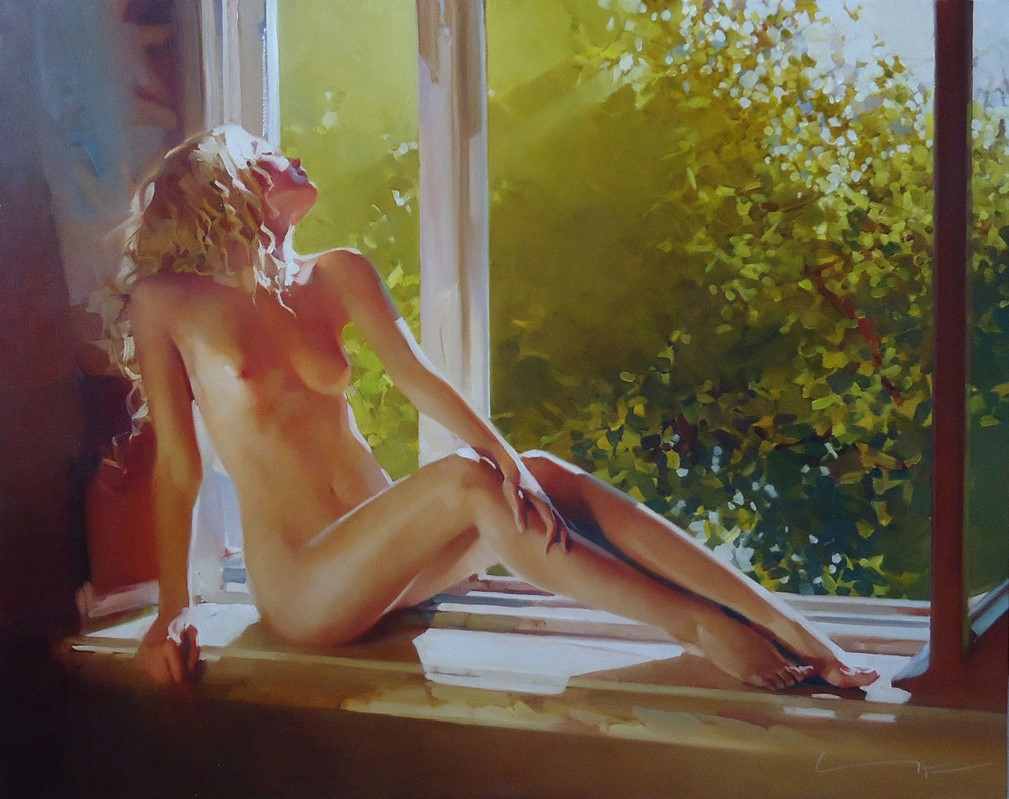
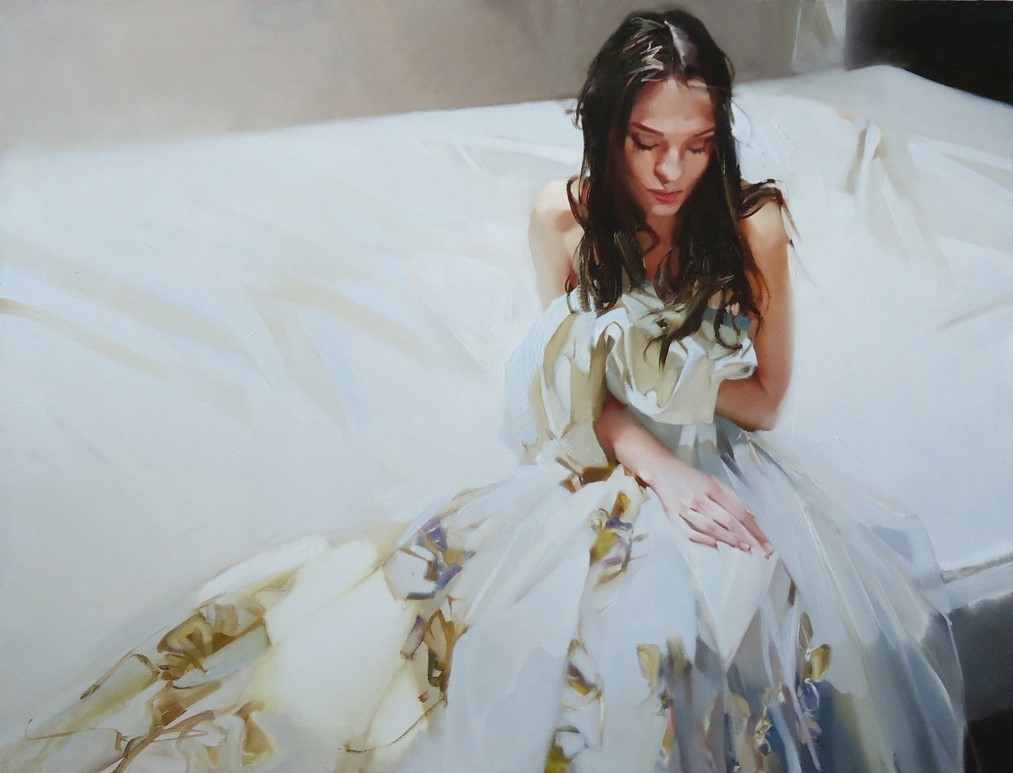
Which artist do you like best? Which artist has had the greatest influence on your work?
It is difficult to talk about artistic influences, but, undoubtedly, it is of no use to decline that these exist. Of course, the first and foremost is my father, Alexander Chernigin. I have always been fascinated by observing him at work, and the pleasure he was obtaining in the working process has always been clearly seen. Therefore, in my father I see a master through whom I have discovered art, and he is also my role model with regards to attitude towards work. He is constantly changing, and he never stops learning new things. He literally does not let go of the pencil and constantly draws something to capture some thoughts or images. So, looking at my father, I have begun understanding that it is possible to create your own world, your own small universe, with its own laws and rules, whihc can only be established or broken by yourself. This factt has always fascinated and intrigued me. Of course, in our house we used to have many books about artists and art. Thus, I have learned about Velazquez and Vermeer, Fechin and Wyeth, Sargent and Degas, Zorn and Bonnard. All of them, at different times, have captivated me into their artistic worlds and inspired me to learn from them.
How is your art perceived outside of Russia?
To be honest, when I look at a painting, the last thing I think about is the nationality of the artist. Painting is an international medium, it is universal, and its impact does not depend on countries, nationalities and languages spoken by artists. The language of art is an image, and not a direct statement in words. In their painting, an artist should express their idea, and then step aside, leaving the viewer alone with the work of art. It is meaningless to write an explanatory note to the painting or assign an art critic to stand next to it for explanations. Although this is precisely what contemporary art most often does: it replaces its original purpose, namely direct and honest contact with the viewer, with some lengthy conceptions to 'beautifully' explain the meanings of installations or performances.
We live in the period of total substitution of the Genuine with cheap surrogates. Art gradually moves to the field of design. But design is only aesthetics, it does not imply spiritual content. This is probably why I returned from design to painting, to discover something new. I am very glad that my paintings find their viewers in Europe, America, and Asia. It is very inspiring and gives hope. Current politics has virtually no influence on this. Indeed, many Western platforms have blocked Russian artists, but viewers’ interest in Russian art still remains at a high level.
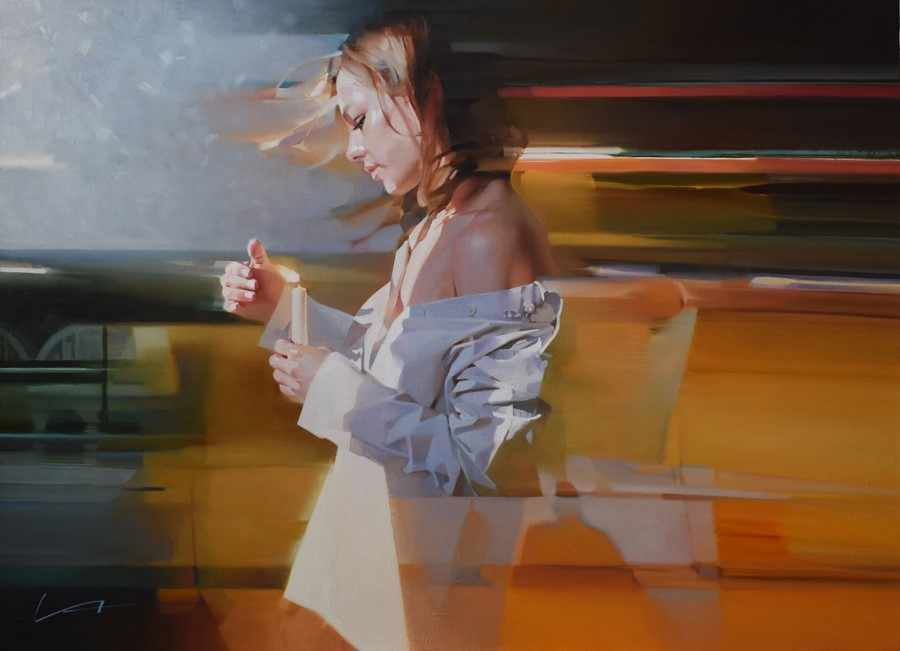
Alexey Chernigin. From the Darkness. 80x110 cm, oil on canvas
What are your creative plans for the future?
The artist's main job is, first of all, to search for the new meanings, forms and horizons. After all, the art of painting in its traditional understanding had exhausted itself already in the beginning of the twentieth century. 'The Black Square' of Malevich has become the tombstone of the art of painting, almost a refusal to further struggle.
One of Dali’s principles was that an artist should paint!
It's simple and brilliant, as for me it is the principle of all times.